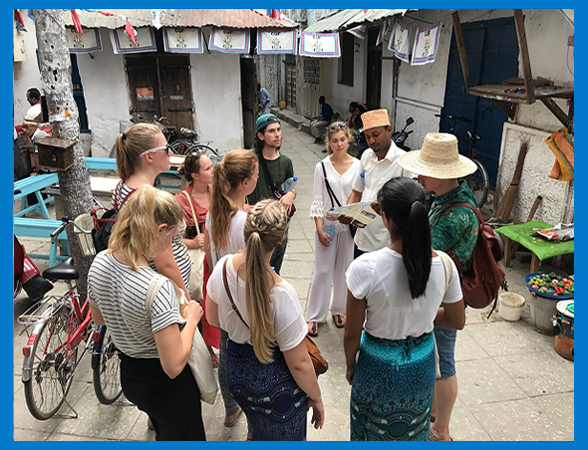
info@zanzibartoursandtravel.com
+ 255 655 411 647

info@zanzibartoursandtravel.com
+ 255 655 411 647

The main islands of Zanzibar are Unguja, Pemba and Tumbatu. Stone Town, on the western shore of Unguja Island, is the Capital of this region. The city gained its name from the many large multi-story "stone" buildings that fill the old town area. These structures are actually constructed with coral and mortar, not stone. There are currently about 1700 of these buildings in the Stone Town section of Zanzibar City.
1100 of these have been classified as having architectural significance. In this small area, which was originally a peninsula, almost an island at times, and which is only about 83 city blocks square, there are 23 "landmark buildings",
two cathedrals, over 50 Mosques, 157 balconies, verandahs and loggias and more than 200 carved doors. Zanzibar's Stone Town has been designated a "World Heritage Site" by the United Nations.
As the site of the largest Swahili Stone Town in the world, Zanzibar is well worth a visit. Tourists are now welcome on Zanzibar and the infrastructure for guests has greatly expanded in the last few years. Hotels and Guest Houses are available in all price ranges. Accommodations extend from basic backpacker support to luxurious private islands. There is an international airport about 5 km. from Stone Town and many modern Ferry's now ply the short sea routes between the Islands and the mainland.
The Zanzibar archipelago is a tropical island and its climate is subject to the whims of monsoon winds. The northern monsoon (known as Kaskazi in Kiswahili) lasts three to four months from December to March. The Southwest monsoon (Kusi), lasts from April to November. The rainy seasons (Masika), starts in March or April and lasts in May. June to October is the dry season and temperatures are clement. There are short rains known as Vuli. The maximum temperatures are 88.50F in February and 81.0F in July. The minimum temperatures are 80.0F in March and 71.0F in June.
The Zanzibar archipelago is a tropical island and its climate is subject to the whims of monsoon winds. The northern monsoon (known as Kaskazi in Kiswahili) lasts three to four months from December to March. The Southwest monsoon (Kusi), lasts from April to November. The rainy seasons (Masika), starts in March or April and lasts in May. June to October is the dry season and temperatures are clement. There are short rains known as Vuli. The maximum temperatures are 88.50F in February and 81.0F in July. The minimum temperatures are 80.0F in March and 71.0F in June.